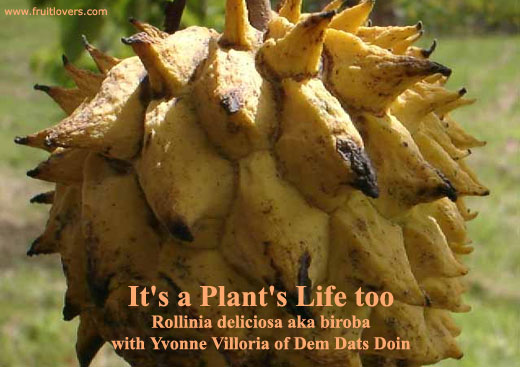
|
Although this sweet tasting fruit is indigenous to the Amazon it is also found in southern Mexico, Central America and the Caribbean region. The large yellow fruit is similar in shape and size to a soursop even to its soft thorny spines. The fruit is usually eaten out of hand or spooned out when it starts to ripen from a light to a dark yellow color. The fruit is not often found in local markets due to a ripening characteristic. The fruit is normally removed from the branches by clipping or cutting the fruit stem at the base of the branch. Within a short period of time the tips of the protuberance start to lose the yellow color and become black. The longer it is exposed to the sun and air the black color becomes dominant. The outside skin color changes is only cosmetic. The custard lemony tasting pulp is not affected at all. Like others in the Annonaceae family, rollinia has many black seeds embedded within the pulp. When planted, it grows a tree like its parents. At Dem Dats Doin, the trees bear fruits within 20 to 34 months especially with loamy soil, good drainage and proper maintenance. Our trees bear at least twice a year. Some trees will fruit when its about 6 feet in height and others when the tree reaches 12 to 20 feet - depending on the area it is planted. Like many of the seed bearing plants at Dem Dats Doin, the Rollinia deliciosa seeds are exported. |
Yvonne and Alfredo Villoria
own and operate Dem Dats Doin, the Toledo
Botanical Arborethum, near Columbia Village in Belize's Toledo
District. |

